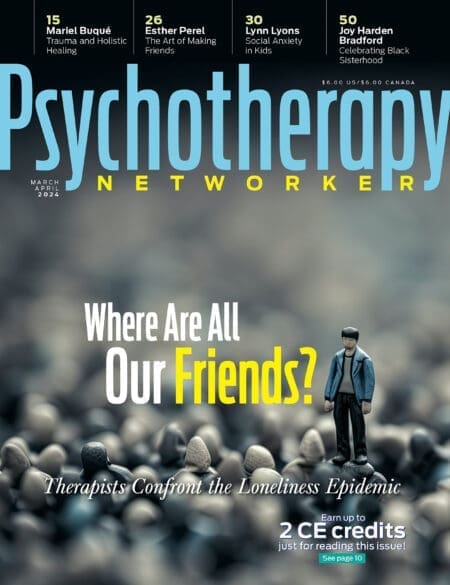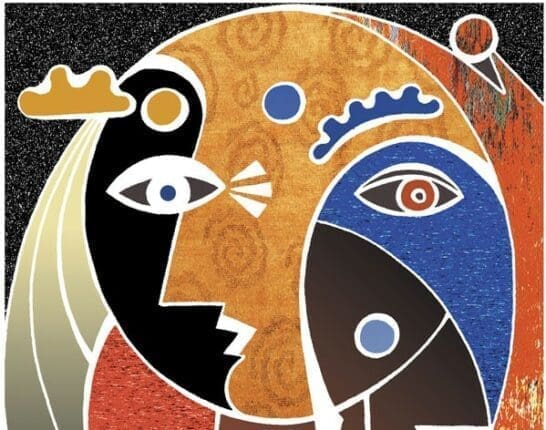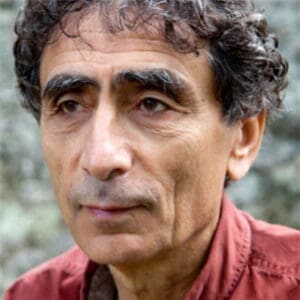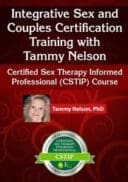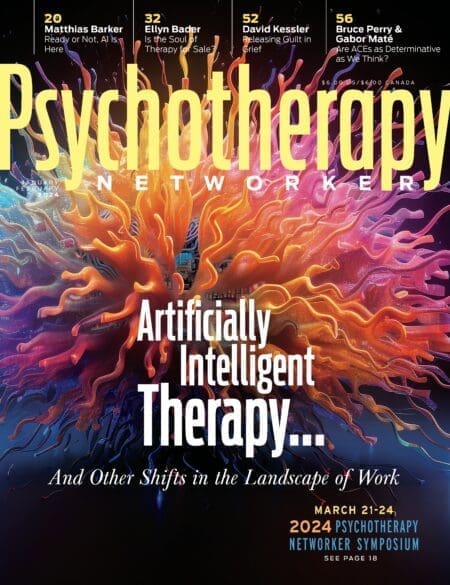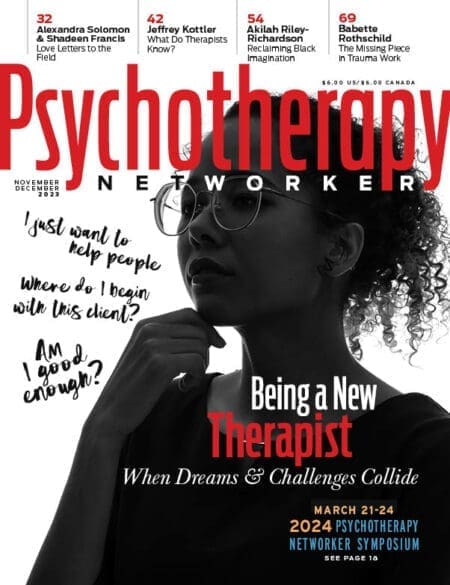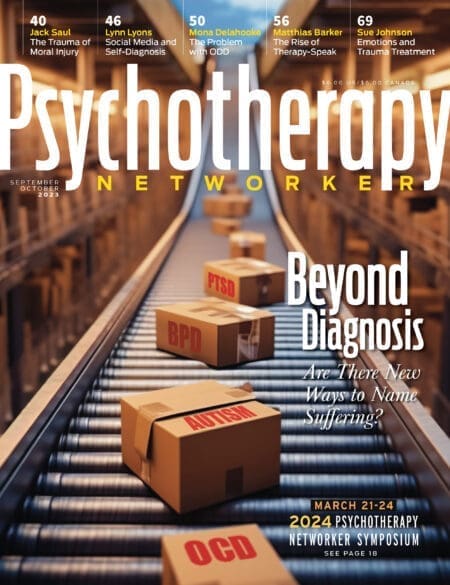As a physician trained in the orthodox Western model, I’ve long been aware of the astonishing achievements of modern medicine, as well as its limitations. What we, as medical doctors, can’t cut out, poison, or burn, we can only alleviate, at best. Mesmerized by cure, we know virtually nothing about healing. We can mend broken bones, transplant hearts and livers, but can do little for fractured souls and traumatized minds. Above all, we don’t seem to understand that people’s illnesses, mental or physical, are not isolated, accidental events, but the results of experiences and beliefs and lifelong patterns of relating to the world. In the face of all the evidence, medical practice separates the mind from the body and the individual from the environment. And we’re arrogant, not in the sense that we think we know everything, but in our conviction that realms of knowledge outside our awareness are not worth investigating.
I have worked in family practice, in palliative care with the terminally ill, and with addictions in Vancouver’s Downtown Eastside, notorious as North America’s most concentrated area of drug use. From both personal observation and the study of the new science of psychoneuroimmunology, I came to understand that often cancers, autoimmune diseases, and chronic illnesses are manifestations of lifelong emotional patterns of dissociation or repression. In turn, these patterns originate in coping mechanisms in response to early childhood emotional suffering. I also came to see that addiction—whether to drugs or to any self-harming habit, be it sexual roving, gambling, compulsive working, internet surfing, or shopping—is always an attempt to escape pain, to shed, if only temporarily, an unbearable unease with the self. My book exploring the relationship of childhood trauma to addictive behaviors of all kinds, In the Realm of Hungry Ghosts, was published in 2008. It was then that I began to receive inquiries about what I knew regarding the use of ayahuasca in the healing of addiction.
At the time, the answer was “nothing.” Although it has been the focus of indigenous medicinal practices in Brazil, Colombia, Peru, and Ecuador for centuries, I had only vaguely heard about ayahuasca. This shamanic tea, brewed of two plants that grow in the forests of the Amazon basin, is by convention named after its woody ayahuasca ingredient, a vine that coils itself around the trees of the jungle. In the past several decades, the brew has gained popularity in North America, though government regulations that have yet to catch up with science and rationality make its use illicit on this continent. Every year, tens of thousands of North Americans and Europeans travel to participate in ceremonies in Latin American countries where the use of these and other plants is either fully legal or tacitly tolerated.
Keen as I was to investigate ways of healing beyond the narrow medical model, I initially found these inquiries bothersome. In my own arrogance, I didn’t want to learn about anything strange and new. Nor could I imagine how a psychedelic substance would help anyone overcome addiction or help heal PTSD or the ingrained patterns of self-suppression that contribute to illness. Since then, however, I have developed deep respect for the collaborative power of shamanic medicine allied with the insights and practice of depth psychology. Respect may be too mild a word—awe hits closer to the mark.
My work with ayahuasca, while a small part of what I do, has become in some ways the most exciting of my various healing activities, the one in which I see the most rapidly transformative potential. In the healing retreats my friends—ayahuasqueros—and I have conducted, we have worked with people struggling with drug use and sex addiction, people facing cancer, degenerative neurological illness, depression, PTSD, anxiety, and chronic fatigue, as well as those seeking wholeness, meaning, and an experience of their true selves. In all cases, people have sought liberation from ingrained, habitual, constrictive patterns.
We’ve worked with people looking for their vulnerable and fully alive child selves, for their parents, for love, for God, for truth, for community, for nature. I can’t say that everyone found everything they were looking for, far from it. I can say that most people took major steps forward on their path toward authenticity and found significant liberation from stultifying, limiting mind patterns and behaviors. Some have transformed their lives. Many are no longer addicted, or no longer ill. Even more are no longer content to be other than who they are. I have witnessed healing from suicidal depression and from autoimmune disease.
One man in his 30s, a first responder in British Columbia, Canada, with a history of trauma himself, wrote to me, “Since my first ayahuasca experience several months ago, I have been experiencing that shift in my consciousness daily. My presence within myself and with others, including animals, is different. I see everything I’ve done from a completely new perspective and live it. I am able to see the difference I make to ease pain in others, and to help them see themselves in a different light.” A real estate broker from New York struck a similar chord: “In my day-to-day capitalistic pursuits, I often meditate now on ways that I might help other people in a deeper way.” And a woman whose life had been blighted by chronic pain and addiction, the template for which had been a history of childhood sexual abuse, wrote, “Today I stand in awe of life’s blessings and the sacred and precious nature of life. I never understood it until now.”
Anyone who has worked with ayahuasca as a facilitator, healer, guide, or shaman will be familiar with such testimonials to the power of the plant and the potential blessings it confers. But wherein resides that power? What about the experience with it grants such benefits? And what might be some of the risks?
New Contexts and Settings
My first personal experience with ayahuasca was during a ceremony led by a Peruvian shaman in Canada. There were a few words of introduction and some silent meditation, but little else by way of preparation. We drank the brew, about 40 of us in a large tent, and sat in silence. And then the music began—icaros (sacred songs) in native Peruvian languages, many Spanish cantos, and some songs in English, all to the accompaniment of guitars and percussion. I don’t recall how long it was, but after a while I found tears flowing from my eyes: tears of joy, tears of love, tears of gratitude.
Love for whom? Gratitude for what? Strangely, these feelings went beyond specifics, although I could direct them that way. What I experienced for the first time in my life were love and gratitude as pure qualities, aspects of myself I hadn’t consciously known before. And I saw and felt how I’d fled from love for so much of my life, failing to recognize it, fearing to embrace it, even betraying it. I understood how so many, indeed all, of my habits, including my addictive behaviors, were an escape from a pain I hadn’t wanted to feel, a deep fear I hadn’t wanted to confront. Experiencing the presence of love in this new way showed me there was nothing to escape from, no reason to run.
I was able to grasp why so many people had contacted me suggesting ayahuasca as a modality in the treatment of addiction. If we can allow ourselves to experience the pain, we don’t need to run away from it, to seek oblivion in the temporary release substances or behaviors can grant us. And, of course, if we touch the core of love, we see there is nothing to run from anymore. There never was, had we but known that.
I experienced the plant twice more in subsequent days, and by that week’s end I was committed to incorporating it, somehow, into my work. The opportunity arose almost immediately, as I met ayahauasqueros, Canadians who’d studied in Peru under the guidance of a Shipibo shaman. They had participated in thousands of ceremonies, some held in isolated jungle venues, endured solitude for many days, spent years following diets without the condiments and comforts of “Western” food and abstaining from sex. Not for the fainthearted. I have since traveled to three countries in Latin America and sat in ceremonies with indigenous shamans, without subjecting myself to the rigors my new friends had endured.
In the Amazon where my collaborators learned and honed their craft, the ceremonies are led by traditional shamans in villages where the culture supports and holds the experience, where the community provides the ongoing context for the learning, healing, and transformation that may result. So we wondered, how can we adapt this unique experience to the urbanized, fragmented, materialistic society of North America? Further, how can we provide a healing experience for people with complex psychological issues engendered by trauma in an alienated, denatured, nonspiritual culture that celebrates individualism but discourages individuality, that promotes conformism without offering real community? How do we create a safe, supportive environment for this work?
Working with urban North Americans, the first challenge was to provide a context, if only transiently, that somehow approximates, or at least substitutes for, the original environment in which the plant has been used. A group of strangers gathering for a ceremony one evening and dispersing in the morning would not suffice. We needed to create a temporary village—bring together a group of people committed to their own growth and to one another’s, and keep them together long enough for the process to unfold. Second, the event had to occur away from the noise and activity pollution of the city. Participants needed to be enfolded by the sounds and sights and smells of nature. Hence, we developed the concept of a week-long retreat in a rural setting, where people would live together, share meals, and get to know one another intimately in that short period of time.
A yet deeper challenge was rooted in the very nature of the ayahuasca experience itself. The plant teaches what we need to learn to heal, but not always in a language immediately accessible to us. Often the visions it brings to people can be magnificent, inspiring, and engendering of the purest joy and gratitude; they can also be threatening, incomprehensible to the mind, and capable of rousing terror. The emotions it evokes can be gentle, soothing, and suffused with peace and happiness; they can also be excruciatingly painful and frightful, and capable of inducing despair and a sense of profound loss. The felt sense can be of ineffable freedom or of dark imprisonment. People can see and be their divine selves or be identified with the most diabolical elements of their personalities. Without preparation, processing, and integration, the ayahuasca experience can be confusing and, for many, incomplete.
It has long been understood that the transaction between the plant and the human is never just one of a chemical effect. According to the shamans, the plant has a spirit—in fact, is a spirit. As a scientifically trained physician, I have no idea what they’re talking about, yet I sense truth in it. The ceremony, the setting, the chanting, the relationship of shaman and guide to participant are at least as important as the brew.
That’s why I was so amused to read a well-known Canadian writer relate that he drank the tea in some friend’s living room, without any ceremonial support, and experienced “nothing.” He was fortunate, I think. Similarly, I shook my head in reading a naive and superficial account of a ceremony that took place in a windowless, New York yoga studio, absent of shamans and trained guides, with a pounding techno beat invading from the bar next door and drunken shouting outside.
For many North Americans even the traditional ceremony may not be enough. Frequently, norteamericanos who travel to the Amazon to work with shamans are left feeling incomplete and bewildered. The deep psychological and spiritual dynamics potentially brought to awareness during the ceremony require guidance, both before and after, for their full integration. Even participants who have lovely experiences may not derive the complete benefit without some supported exploration and help with interpretation.
As one who offers such guidance, I’ve learned not to be concerned with whether a person saw beauty or monstrosity, felt relief or intense discomfort, joyousness or horror. What matters is the personal teaching in each person’s journey, a teaching that arises from one’s life, formative influences, present situation, and current needs.
Unveiling the Self
“We ordinarily believe that we know who we are, what we are, what we are going to do, what life is about, what should happen,” writes the spiritual master A.H. Almaas. “Inquiry means challenging all these things. Do we really know?” I see the ayahuasca experience as primarily one of inquiry. Everything that occurs, or does not occur, is the object of curiosity, of exploration. The question is simply, what is the meaning of the experience I’m having? How does it relate to where I’ve been and to where I may be going? Who is having the experience or who do I believe is having the experience?
From such a perspective it really doesn’t matter that this person visualized beauty while another beheld trauma. We aren’t seeking this or that experience; we’re simply seeking the truth in any experience. There are no “good trips” or “bad trips.” There are only journeys where our task is to learn from whatever we witness. It’s never the painful or frightening visions or emotional states that make an ayahuasca journey confusing or disturbing—only the lack of meaning a person may be left with, for lack of proper guidance and support. Ayahuasca, in the right setting, helps to reveal meaning.
That addictions or illnesses, like cancer, rheumatoid arthritis, or multiple sclerosis, can be related to trauma is a novel idea to doctors trained in the biological and genetic determinism characterizing modern medical practice, but it’s hardly news to anyone who’s interviewed addicted human beings or who’s familiar with the research on the relationship between childhood adversity and adult disease. Ayahuasca can evoke direct but long-suppressed memories of trauma. It can also trigger emotional states and visions of horror that are not direct recollections, but emotional imprints of trauma. There’s nothing wrong with that—so long as people can stay present to their experience and accompany themselves through the pain and grief and fear that may arise.
As Somatic Experiencing pioneer Peter Levine teaches us, trauma is not simply what happens—it’s a result of our inability or lack of opportunity to move through it. For children to move through a painful experience, they need the presence of a supportive adult. Children become traumatized not necessarily because terrible things have happened to them, but because they had to endure that terror alone, often suppressing their conscious awareness of it just to survive.
When suppressed, deeply ingrained, and sublimated, the trauma becomes the source of addictive patterns and other coping mechanisms that lead to many illnesses of body and mind. As Richard Schwartz, developer of the Internal Family Systems therapeutic model, has found in his work, those patterns and coping mechanisms also become the motive forces for the different parts of us that are burdened by the trauma. The healing capacity of the ayahuasca experience resides significantly in the plant’s ability to evoke the painful experiences of childhood self while having those experiences witnessed by the empathic curiosity of the adult self. Imaging studies of the brain under the impact of ayahuasca show circuits are activated that carry childhood emotional memory and facilitate adult insight.
“I went to all the sad places of my childhood,” one participant shared, “but I accompanied myself there with understanding and love.” Or as Schwartz would put it, different parts of ourselves emerge into daylight, witnessed and cared for by the Self, the deep source of wisdom, compassion, and nonjudgmental acceptance that resides in all of us. Almaas might call it essence, others our Buddha nature.
It often takes years of therapy or spiritual seeking to yield this kind of inner opening. The ayahuasca ceremony can rapidly and directly take us beneath the false worldview we have all developed since childhood, allowing us to approach the reality underneath our coping mechanisms, whether they’re addictions or taking on the needs of others while ignoring our own, manipulating our environment, or seeking approval or success. During the ceremony, we may be visited by spirit healers in human, divine, or animal form. We may see jungle creatures or jungle plants, and these may talk to us, invite us, guide us. Although I’ve never had such visions, many people I’ve worked with have. There is no prescribed form in which the teaching must arrive. We each learn according to our own nature. Whatever shape they may take—a vision, an insight, a deep emotion, a felt sense, or a pure state—the powers of love or guidance are always within us. The ceremony allows them to emerge, unclouded and unobscured.
The Full Immersion
Over the years, my coworkers and I have developed a certain way of approaching our retreats that’s now being adapted in some healing centers in Latin America. Typically, we begin on the evening of arrival with introductions and people sharing their goals for the retreat—what problem they wish to resolve, what they wish to learn, where they perceive the need for completion in their lives. Our goal, as team leaders, is to assist each person in finding their truth. We believe, as Jesus said, “You shall know the truth, and the truth shall make you free.”
The first day is spent in group process, helping people explore how their issues, emotions, and beliefs relate to their formative experiences and the way they’re currently living. The ultimate intent is to experience the present moment free of beliefs and coping patterns that represent the past. The first ceremony occurs that night, after intentions are set—not as fixed and limiting goals, but as points of inquiry, as anchors to help people stay grounded in their purpose during the ceremony. “I intend to experience my childhood,” someone will say. Or “I want to see what keeps me from love,” or “I want to know my fear, or my power, or my clarity, or my pain.”
My role as guide/therapist effectively stops once the brew is ingested. The ayahuasqueros chant—not generically, not according to some predetermined playlist, but sensitively to the unfolding group experience, mindful of the energies being generated and released, and responsive to the needs of individuals for their intervention. They work hands-on with people to release energetic or emotional blockages, to identify and unlock resistances.
After sleep and meals, the next afternoon and following day are aimed toward full immersion in and detailed processing of each person’s experience during the ceremony. Now the teaching deepens, the coming of insight accelerates, the bonds among participants are strengthened, the opening to inquiry widens. Two or more ceremonies follow, preceded and followed by the group work already described, with some participants requesting or needing some individual attention and counseling throughout.
We have successfully applied this model to middle-class participants and also in an aboriginal community in British Columbia, heavily traumatized by oppression and abuse. The results, here, too, have been gratifying. The power, intelligence, and mutual support and love inherent in each group, no matter what specific problems or intentions each individual may bring, is always inspiring. No less astonishing to behold is the power of the plant to catalyze people’s growth, empower them to experience their true self, and teach them the path they need to follow to be true to that self.
The Beauty and the Risks
Ayahuasca is not for everyone. Even for the ones it calls, it’s not a panacea. The conditioned self, or egoic personality, supported, threatened, and egged on by the materialistic culture we live in, will seek to assert itself even in the face of new knowledge and insight. Today’s cathartic realization may, by next week, become a vague memory. Unless ongoing work is done to integrate the learning, our “habit energies,” as the Buddha called them, may soon reestablish their dominance. And the world—because it’s largely unconscious—will always seek to invalidate and suppress our consciousness.
No matter how profound our insights, how lovely our connections to our fellow travellers, how fervent our intentions, how deep our sense of transformation, we can continue to generate suffering for ourselves and for others in our lives. We can go back to sleep. But the beauty of it is, we don’t need to: we now have choice—or, at least, more freedom of choice than before. Integration means an ongoing relationship with the truths newly uncovered: continued, nonjudgmental caring for the traumatized parts of ourselves as they may show up in life, continued revisiting the healing that has occurred, and continued acquaintance with the new awareness within—along with practices that support all these pathways.
For some, the plant is contraindicated. People with a history of psychosis or mania or, say, the severe fragmentation seen in a diagnosis such as dissociative identity disorder are best to avoid it. I would not accept them at a retreat—not for fear of what would emerge, but because of the impossibility of providing long-term care and follow up in a safe context. Even with careful screening of potential participants, on rare occasion someone will be triggered into reactions with manic, markedly dissociative, or even psychotic qualities, to put it into Western diagnostic terms. Such incidents are surprisingly infrequent and can be brought to satisfactory and even salutary resolution when treated with confidence, compassion, and patience. Once, I witnessed an episode that required a brief course of antipsychotic medication—once, in over a decade and among hundreds of participants.
Active drug users are also not accepted, as craving and withdrawal would vitiate their experience. Recent users, no longer in withdrawal, have benefited greatly. Ultimately, even when a cure isn’t possible for someone, healing may happen. A man with late-stage ALS (amyotrophic lateral sclerosis, known in North America as Lou Gehrig’s disease) attended one of our retreats. After his first ayahuasca ceremony he said, “I came here because I wanted to live. Now I understand that wanting to live is not the same as living longer. It means being fully alive while my life lasts.” His last year was peaceful, full of wisdom and joy and shared bliss with his family and friends.
“I have always believed no one wanted me here on this Earth,” one participant wrote a few months after her retreat. “This drastically colored almost all of my experiences. However, during the ayahuasca ceremony, I listened to a voice saying, ‘I don’t want you to go away, I don’t want you to go away,’ over and over and over. I cried and remembered the innumerable times in my life I had disappeared when I listened to the voice that said no one wants me here. Now, providing that basic building block of attention to myself, I find that when I remember I want me here, I have a very different experience of myself and the world. I feel solid in a new way. I do exist. I am here. All the times I was convinced that no one wanted me here, I was bringing that belief to the situation. I have always thought people didn’t like me. Now I know I’m lovable.” This, indeed, is the presence of the Self, our true nature.A note of caution: ayahuasca has been exploited for financial gain by unscrupulous practitioners, or even for the sexual gratification of healers preying on vulnerable clients, most often young women. Such cases are notorious in the shamanic world. Another sensitive issue I must mention is that of cultural appropriation—the adaptation and exploitation of indigenous practices without respect or support for the people who developed these practices and whose lands and resources are still being colonized. I am still learning about that.

The melding of shamanic wisdom and Western psychology has much to offer. The latter especially has often lacked a deeper sense of the full potential of human beings to realize love and gratitude, clarity and courage, belonging and unity, not as temporary states or actions, but as innate qualities. Too often we’ve been concerned only with changing behaviors or fixing dysfunctional dynamics. Yet if we understand that trauma is not what happens to us but the disconnection that happens within us, we see that the fundamental disconnect is from the very Self that is manifested through those innate qualities.
What the plant offers is not magic but an effective and often rapid pathway to inner experience and profound awareness. We often hear after the ceremony statements like “This week—or, even, this night—was like 10 years of psychotherapy.” In turn, the insights and modalities of Western psychotherapy can greatly deepen and illuminate the shamanic experience of moving toward the true Self, the most essential and rewarding journey in this life.
This article is adapted by the author from his postscript for The Therapeutic Use of Ayahuasca, ed. Beatriz Caiuby Labate and Clancy Cavnar, Springer, 2014.
ILLUSTRATION © ILLUSTRATIONSOURCE.COM/NOMA
Gabor Maté
Gabor Maté, MD, a family practitioner for over three decades, is the author of four bestselling books, including When the Body Says No: Exploring the Stress-Disease Connection and In the Realm of Hungry Ghosts: Close Encounters with Addiction. His upcoming books include The Myth of Normal: Illness and Health in an Insane Culture.
